හොයාගෙන හොයාගන යනකොට තමයි මේක දැනගන්න ලැබුනේ.... ඔයාලටත් ගෙනාවා බලන්න බලලා කමෙන්ටුවක් දාලාම යන්න......
Osborne 1
Introduced: | April 1981 |
Price: | US $1,795 |
Weight: | 24.5 pounds |
CPU: | Zilog Z80 @ 4.0 MHz |
RAM: | 64K RAM |
Storage:dual 5-1/4 inch, 91K drives
Display:built-in 5" monitor
53 X 24 text
Ports:parallel / IEEE-488
modem / serial port
OS:CP/M
While the Osborne was a good deal at $1795, it also came bundled with about $1500 of free software:
CP/M System
CP/M Utility
SuperCalc spreadsheet application
WordStar word processing application with Mail Merge
Microsoft MBASIC programming language
Digital Research CBASIC programming language
The Osborne was a huge overnight success, with sales reaching 10,000 units a month.
In September 1981, Osborne Computer Company had its firstUS$1 million sales month.
The Osborne was a huge overnight success, with sales reaching 10,000 units a month.
In September 1981, Osborne Computer Company had its first
Available options include the Osborne DATACOM modem.
The Osborne modem and COMM-PAC software gives you access to more than 200 electronic bulletin boards across the country (well, in 1982, that is).
Data transfer rate is 300 baud.
The modem fits in the diskette pocket below floppy drive A.
It fits in both the original "tan case" and the newer "blue case" Osborne (see below), but the diskette pocket in the "blue case" is smaller, so the eight alignment tabs must be 'carefully snapped off'.
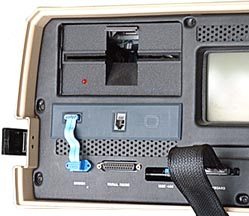
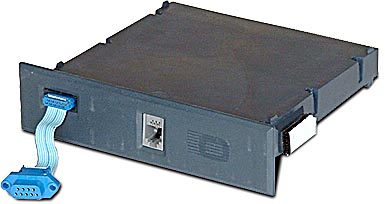
Also available is the Double-Density Disk Drive Option. This is an additional circuit board which must be installed inside the system.
Doubles the amount of data storage per diskette.
Recognizes these formats:
-- Osborne 1 single density - 92K per diskette
-- Osborne 1 double density - 182K per diskette
-- Xerox 820 single density - 82K per diskette
-- Cromemco single density - 80K per diskette
-- IBM Personal Computer (CP/M-86 format) - 156K per diskette
-- DEC VT-180 - 171K per diskette


Also available is the Double-Density Disk Drive Option. This is an additional circuit board which must be installed inside the system.
-- Osborne 1 single density - 92K per diskette
-- Osborne 1 double density - 182K per diskette
-- Xerox 820 single density - 82K per diskette
-- Cromemco single density - 80K per diskette
-- IBM Personal Computer (CP/M-86 format) - 156K per diskette
-- DEC VT-180 - 171K per diskette
මේ විස්තර ටික http://en.wikipedia.org/wiki/Laptop උපුටා ගන්නා ලදි...
History
Main article: History of laptops
As the personal computer became feasible in the early 1970s, the idea of a portable personal computer followed. A "personal, portable information manipulator" was imagined by Alan Kay at Xerox PARC in 1968,[6] and described in his 1972 paper as the "Dynabook".[7]
The IBM SCAMP project (Special Computer APL Machine Portable), was demonstrated in 1973. This prototype was based on the PALM processor (Put All Logic In Microcode).
The IBM 5100, the first commercially available portable computer, appeared in September 1975, and was based on the SCAMP prototype.[8]
As 8-bit CPU machines became widely accepted, the number of portables increased rapidly. The Osborne 1, released in 1981, used the Zilog Z80 and weighed 23.6 pounds (10.7 kg). It had no battery, a 5 in (13 cm) CRT screen, and dual 5.25 in (13.3 cm) single-density floppy drives. In the same year the first laptop-sized portable computer, the Epson HX-20, was announced.[9] The Epson had a LCD screen, a rechargeable battery, and a calculator-size printer in a 1.6 kg (3.5 lb) chassis. BothTandy/RadioShack and HP also produced portable computers of varying designs during this period.[10][11]
The first laptops using the flip form factor appeared in the early 1980s. The Dulmont Magnum was released in Australia in 1981–82, but was not marketed internationally until 1984–85. The $8,150 ($18,540 today) GRiD Compass 1100, released in 1982, was used at NASA and by the military among others. The Gavilan SC, released in 1983, was the first computer described as a "laptop" by its manufacturer[12] From 1983 onward, several new input techniques were developed and included in laptops, including the touchpad (Gavilan SC, 1983), the pointing stick (IBM ThinkPad 700, 1992) and handwriting recognition (Linus Write-Top,[13] 1987). Some CPUs, such as the 1990 Intel i386SL, were designed to use minimum power to increase battery life of portable computers, and were supported by dynamic power management features such as Intel SpeedStep and AMD PowerNow! in some designs.
Displays reached VGA resolution by 1988 (Compaq SLT/286), and colour screens started becoming a common upgrade in 1991 with increases in resolution and screen size occurring frequently until the introduction of 17"-screen laptops in 2003. Hard drives started to be used in portables, encouraged by the introduction of 3.5" drives in the late 1980s, and became common in laptops starting with the introduction of 2.5" and smaller drives around 1990; capacities have typically lagged behind physically larger desktop drives. Optical storage, read-only CD-ROM followed by writeable CD and later read-only or writeable DVD and Blu-Ray, became common in laptops soon in the 2000s.
More History of Laptop Firsts
· Also released in 1981, was the Epson HX-20, a battery powered portable computer, with a 20-character by 4 line LCD display and a built-in printer.
· In January of 1982, Microsoft's Kazuhiko Nishi and Bill Gates begin discussions on designing a portable computer, based on using a new liquid crystal display or LCDscreen. Kazuhiko Nishi later showed the prototype to Radio Shack who agree to manufacture the computer.
· In 1983, Radio Shack released the TRS-80 Model 100, a 4 lb. battery operated portable computer with a flat and more of a laptop design.
· In February 1984, IBM announced the IBM 5155 Portable Personal Computer.
· Three years later in 1986, Radio Shack released the improved and smaller TRS Model 200.
· In 1988, Compaq Computer introduces its first laptop PC with VGA graphics - theCompaq SLT/286.
· In 1989, NEC UltraLite was released, considered by some to be the first "notebook style" computer. It was a laptop size computer which weighed under 5 lbs. (second photo)
· In September 1989, Apple Computer released the first Macintosh Portable that later evolved into the Powerbook. (second photo)
· In 1989, Zenith Data Systems released the Zenith MinisPort, a 6-pound laptop computer. (more Zenith laptops)
· In October 1989, Compaq Computer released its first notebook PC, the Compaq LTE.
· In March 1991, Microsoft released the Microsoft BallPoint Mouse that used both mouse and trackball technology in a pointing device designed for laptop computers.
· In October 1991, Apple Computers released the Macintosh PowerBook 100, 140, and170 - all notebook style laptops. (more on Powerbooks)
· In October 1992, IBM released its ThinkPad 700 laptop computer.
· In 1992, Intel and Microsoft release APM or the Advanced Power Management specification for laptop computers.

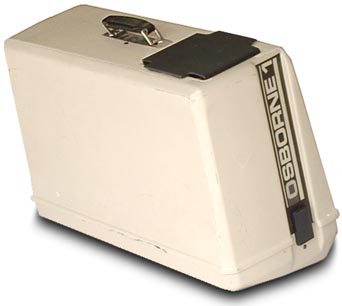


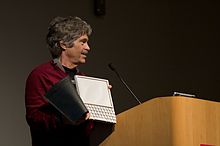
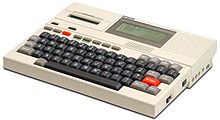



අදමයි මේක දැක්කේ...එළ
ReplyDelete